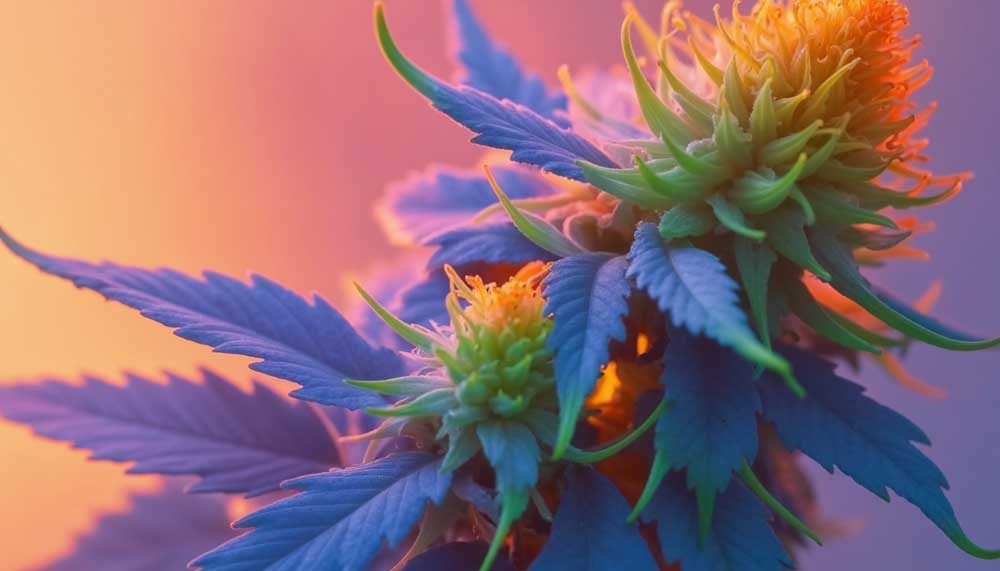A Legendary Hybrid: White Widow Strain – The Best of Both Worlds
Get ready to meet the legendary White Widow strain, the best hybrid strain of all time! As a funny coffee shop owner from Amsterdam, Holland, I’ve had the pleasure of witnessing the magic of White Widow firsthand. This remarkable hybrid, with its high Indica dominance at 60% and Sativa’s 40%, offers an extraordinary experience that has captivated cannabis enthusiasts around the globe.
The History of White Widow
The story behind White Widow marijuana is as rich as its effects. Back in the ’90s, a passionate and innovative grower named Scott Blakey, also known as Shantababa, took his time to develop what would become one of the most instantly uplifting marijuana strains ever created.
Shantababa, a shareholder in a prominent seed bank, embarked on a journey to produce extraordinary marijuana strains. His genius led him to crossbreed a resin-heavy South Indian Indica with the original Brazilian Sativa strain. This careful fusion resulted in a truly remarkable creation – White Widow.
What sets White Widow apart from other strains is its distinctive appearance. The buds of White Widow are unmistakable with their snowy white color and crystal resin coating. They have a chunky, tapered, and conical shape, embodying the best characteristics of both Indica and Sativa.
When it comes to structure, White Widow leans slightly more towards Sativa, making it a visually captivating strain. Despite its sticky nature, the buds break apart easily, revealing light green leaves and prominent pistils.
White Widow has gained worldwide recognition, earning its place as one of the most popular marijuana strains available today. It has become a staple for both recreational and medical users, making a significant impact on the cannabis community. In fact, in 1995, White Widow won the prestigious World Cannabis Cup, solidifying its status as a true champion.
Key Facts about White Widow
Genetics: White Widow was unleashed to the public in 1995, the same year it claimed the World Cannabis Cup. This exceptional strain is the result of crossing a resin-heavy South Indian Indica with the original Brazilian Sativa strain.
Hybrid Ratio: White Widow exhibits a slight Indica dominance, with a ratio of 60% Indica and 40% Sativa.
THC Level: With THC levels ranging from 20% to 25%, White Widow delivers a potent and enjoyable experience.
The High: Prepare yourself for an instant burst of energy and excitement. White Widow offers an uplifting and euphoric sensation that can turn even the gloomiest day into an adventure.
Growing White Widow
If you’re considering cultivating White Widow, rest assured that this strain is known for its resilience. It doesn’t demand extensive expertise and can thrive under various conditions.
White Widow demonstrates impressive resistance to bugs and molds, making it an ideal choice for growers. It reacts reasonably well to changes in weather, allowing for successful cultivation when following industry experts’ recommendations.
Whether you choose to grow White Widow indoors or outdoors, it’s a strain that adapts effortlessly. Indoors, it’s recommended to maintain a sunny and warm climate, while a greenhouse provides the perfect combination of factors for germination and growth.
Flowering typically begins around the 8th week, but for those seeking a frosty appearance, an additional two weeks of patience will be rewarded. Adjusting the lighting pattern inside your greenhouse can create stress on the plants, resulting in a beautiful accumulation of frost.
At maturity, White Widow plants grown indoors can reach a height of up to two feet. When grown outdoors, they tend to be taller and thicker, taking full advantage of the natural environment.
Indoor cultivation of White Widow yields approximately 20-24 ounces per square meter, while outdoor harvests can be slightly higher. Ensure the crop receives an average temperature of about 60 to 80 degrees Fahrenheit, along with ample direct sunlight, to maximize your harvest.
White Widow Effects
On a scale of 1 to 10, White Widow’s effects are off the charts. Prepare to be overwhelmed with excitement and energy as this strain takes hold. It induces an uplifting and euphoric sensation that gradually leaves you feeling relaxed, energized, and creatively inspired.
Side Effects
Like any strain, White Widow does come with potential side effects. Dry mouth (cottonmouth), dry eyes, and dizziness are among the commonly reported effects. Excessive consumption may lead to feelings of paranoia and anxiety, so it’s always best to enjoy White Widow in moderation.
Final Thoughts
White Widow strain may be a one-time World Cannabis Cup winner, but its fame and popularity endure to this day. This remarkable strain has made a significant impact in the management and treatment of various psychological conditions, including PTSD.
Whether you’re an experienced grower or a beginner, cultivating White Widow can be an enjoyable and rewarding experience. With a temperature of around 70 degrees Fahrenheit, you’ll be able to unlock the full potential of this strain and experience its energetic, social, and uplifting effects. Just remember to stay hydrated and have some eye drops handy to combat the cottonmouth and dry eyes. Enjoy the journey with White Widow and embrace the wonder of this extraordinary hybrid strain!
FAQs about White Widow
What are the key effects of the White Widow strain?
White Widow offers an energetic and euphoric high that boosts mood and creativity. It starts with an uplifting rush and gradually transitions into a relaxed state, making it ideal for both social and creative activities.
How does White Widow compare to other strains in terms of THC levels?
White Widow boasts a potent THC content ranging from 20% to 25%, which provides a strong and satisfying experience. This high THC level contributes to its powerful effects and popularity among enthusiasts.
What are the best growing conditions for White Widow?
White Widow thrives in both indoor and outdoor environments. For indoor growth, maintain a sunny and warm climate with temperatures between 60 to 80 degrees Fahrenheit. Outdoor cultivation benefits from ample direct sunlight and can yield slightly higher amounts.















